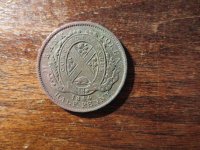I am new to the forum and hobby, so new in fact I don't have a detector yet.... That brings me to the question: What is a good detector to buy to look for gold in western N.C.? Anyone had experience in the Vein Mt area with the mineralization in the ground... This will be my first detector so I'm not looking to pay 4000 for a top of the line minelab, more $800 down is more my price range...
I currently have a 3 inch Proline high banker but am looking for a metal detector for the cooler months.
Any help will be appreciated...
I also posted this in the N.C. forum
I currently have a 3 inch Proline high banker but am looking for a metal detector for the cooler months.
Any help will be appreciated...
I also posted this in the N.C. forum
Amazon Forum Fav 👍
Upvote
0




